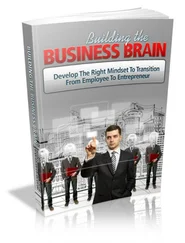Bruce Hood - The Domesticated Brain - A Pelican Introduction (Pelican Books)
Здесь есть возможность читать онлайн «Bruce Hood - The Domesticated Brain - A Pelican Introduction (Pelican Books)» весь текст электронной книги совершенно бесплатно (целиком полную версию без сокращений). В некоторых случаях можно слушать аудио, скачать через торрент в формате fb2 и присутствует краткое содержание. Год выпуска: 2014, ISBN: 2014, Издательство: Penguin Books Ltd, Жанр: Старинная литература, на английском языке. Описание произведения, (предисловие) а так же отзывы посетителей доступны на портале библиотеки ЛибКат.
- Название:The Domesticated Brain: A Pelican Introduction (Pelican Books)
- Автор:
- Издательство:Penguin Books Ltd
- Жанр:
- Год:2014
- ISBN:9780141974873
- Рейтинг книги:4 / 5. Голосов: 1
-
Избранное:Добавить в избранное
- Отзывы:
-
Ваша оценка:
- 80
- 1
- 2
- 3
- 4
- 5
The Domesticated Brain: A Pelican Introduction (Pelican Books): краткое содержание, описание и аннотация
Предлагаем к чтению аннотацию, описание, краткое содержание или предисловие (зависит от того, что написал сам автор книги «The Domesticated Brain: A Pelican Introduction (Pelican Books)»). Если вы не нашли необходимую информацию о книге — напишите в комментариях, мы постараемся отыскать её.
The Domesticated Brain: A Pelican Introduction (Pelican Books) — читать онлайн бесплатно полную книгу (весь текст) целиком
Ниже представлен текст книги, разбитый по страницам. Система сохранения места последней прочитанной страницы, позволяет с удобством читать онлайн бесплатно книгу «The Domesticated Brain: A Pelican Introduction (Pelican Books)», без необходимости каждый раз заново искать на чём Вы остановились. Поставьте закладку, и сможете в любой момент перейти на страницу, на которой закончили чтение.
Интервал:
Закладка:
36. J. Kellerman, J. Lewis and J. D. Laird (1989), ‘Looking and loving: The effects of mutual gaze on feelings of romantic love’, Journal of Research in Personality , 23, 145–61.
37. E. Nurmsoo, S. Einav and B. M. Hood (2012), ‘Best friends: children use mutual gaze to identify friendships in others’, Developmental Science, 15, 417–25.
38. M. Bateson, D. Nettle and G. Roberts (2006), ‘Cues of being watched enhance cooperation in a real-world setting’, Biology Letters, 2, 412–14.
D. Francey and R. Bergmu¨ller (2012), Images of eyes enhance investments in a real-life public good. PLoS ONE 7, e37397.
Kate L. Powell, Gilbert Roberts and Daniel Nettle (2012), ‘Eye images increase charitable donations: Evidence from an opportunistic field experiment in a supermarket’, Ethology , 118, 1–6.
M. Ernest-Jones, D. Nettle and M. Bateson (2011), ‘Effects of eye images on everyday cooperative behavior: a field experiment’, Evol. Hum. Behav . 32, 172–8.
39. Mike Tomasello (2009), ‘Why We Cooperate’, Boston Review .
40. M. Tomasello and M. J. Farrar (1986), ‘Joint attention and early language’, Child Development, 57, 1454–63.
41. G. Butterworth (2003), ‘Pointing is the royal road to language for babies’ in S. Kita (ed.), Pointing: Where language, culture, and cognition meet, Mahwah, NJ: Erlbaum, pp. 9–33.
42. Others believe that apes share all the same communicative gestures and joint attention as humans. David A. Leavens (2012), ‘Joint attention: twelve myths’ in Joint attention: New developments in Psychology, Philosophy of Mind, and Social Neuroscience , Cambridge, Mass.: MIT Press, pp. 43–72.
43. Anne Fernald and T. Simon (1984), ‘Expanded intonation contours in mothers’ speech to newborns’, Developmental Psychology , 20, 104–13.
44. Andrew N. Meltzoff and Rechele Brooks (2001), ‘ “Like me” as a building block for understanding other minds: bodily acts, attention, and intention’ in Betram F. Malle and Dare Baldwin (eds), Intentions and Intentionality: Foundations of Social Cognition , Cambridge, Mass.: MIT Press, 171–91.
45. Rod Parker-Rees (2007), ‘Liking to be liked: imitation, familiarity and pedagogy in the first years of life’, Early Years , 27, 3–17.
46. Andrew N. Meltzoff (1995), ‘Apprehending the intentions of others. Re-enactment of intended acts by 18-month-old children’, Developmental Psychology , 31, 838–50.
47. G. Gergely, H. Bekkering and I. Kiraly (2002), ‘Rational imitation in preverbal infants’, Nature , 415, 755.
48. V. Horner and A. Whiten (2005), ‘Causal knowledge and imitation/emulation switching in chimpanzees (Pan troglodytes) and children (Homo sapiens)’, Animal Cognition , 8, 164–81.
49. Derek E. Lyons, Andrew G. Young, and Frank C. Keil (2007), ‘The hidden structure of over imitation’, Proceedings of the National Academy , 104, 19751–6.
50. P. A. Herrmann, C. H. Legare, P. L. Harris and H. Whitehouse (2013), ‘Stick to the script: The effect of witnessing multiple actors on children’s imitation’, Cognition, 129, 536–43.
51. C. H. Legare and P. A. Herrmann (2013), ‘Cognitive consequences and constraints on reasoning about ritual’, Religion, Brain and Behavior, 3 , 63–5.
52. A. Phillips, H. M. Wellman and E. S. Spelke (2002), ‘Infants’ ability to connect gaze and emotional expression to intentional action’, Cognition , 85, 53–78.
53. S. Itakura, H. Ishida, T. Kanda, Y. Shimada, H. Ishiguro et al. (2008), ‘How to build an intentional android: Infant imitation of a robot’s goal-directed actions’, Infancy , 13, 519–32.
54. R. W. Byrne and A. Whiten (eds) (1988), ‘Machiavellian Intelligence. Social Expertise and the Evolution of Intellect’ in Monkeys, Apes, and Humans , Oxford: Oxford University Press.
55. A. Gopnik and J. W. Astington (1988), ‘Children’s understanding of representational change and its relation to the understanding of false belief and the appearance reality distinction’, Child Development , 59, 26–37.
56. Jean Piaget and Barbel Inhelder (1956), The Child’s Conception of Space , London: Routledge & Keegan Paul.
57. Hans Wimmer and Josef Perner (1983), ‘Beliefs about beliefs: Representations and constraining function of wrong beliefs in young children’s understanding of deception’, Cognition , 13, 103–28.
58. Kristine H. Onishi and Renée Baillargeon (2005), ‘Do 15-month-old infants understand false beliefs’, Science , 308, 255–8.
59. Carla Krachun, Malinda Carpenter, Josep Call and Michael Tomasello (2009), ‘A competitive nonverbal false belief task for children and apes’, Developmental Science , 12, 521–35.
60. Susan A. Birch and Paul Bloom (2007), ‘The curse of knowledge in reasoning about false beliefs’, Psychological Science , 18, 382–6.
61. Ian Apperly (in press), ‘Can theory of mind grow up? Mindreading in adults, and its implications for the development and neuroscience of mindreading’ in S. Baron-Cohen, H. Tager-Flusberg and M. Lombardo (eds), Understanding Other Minds (third edition).
62. Lawrence A. Hirschfeld (2013), ‘The Myth of Mentalizing and the Primacy of Folk Sociology’ in M. R. Banaji and S. A. Gelman (eds), Navigating the Social World , New York: Oxford University Press.
63. David Liu and Kimberly E. Vanderbilt (2013), ‘Children Learn From and About Variability Between People’ in M. R. Banaji and S. A. Gelman (eds), Navigating the Social World. What Infants, Children, and Other Species Can Teach Us, New York: Oxford University Press.
64. C. H. Legare (2012), ‘Exploring explanation: Explaining inconsistent information guides hypothesis-testing behavior in young children’, Child Development , 83, 173–85.
CHAPTER 3
1. The exact cause of Joseph Merrick’s condition is still unresolved but candidate diseases of Proteus Syndrome and neurofibromatosis Type I have been suggested.
2. M. Howell and P. Ford (1992) [1980], The True History of the Elephant Man (third edition), London: Penguin.
3. I. Stevenson (1992), ‘A new look at maternal impressions: an analysis of 50 published cases and reports of two recent examples’, Journal of Scientific Exploration , 6, 353–373.
4. Clarence Maloney (1976), The Evil Eye , New York: Columbia University Press.
5. E. A. Kensinger and D. L. Schacter (2005), ‘Emotional content and reality monitoring ability: fMRI evidence for the influence of encoding processes’, Neuropsychologica , 43, 1429–43.
6. M. Joëls, Z. Pu, O. Wiegert, M. S. Oitzl and H. J. Krugers (2006), ‘Learning under stress: how does it work?’, Trends in Cognitive Science, 10, 152–8.
7. R. Rachel Yehuda, Stephanie Mulherin Engel, Sarah R. Brand, Jonathan Seckl, Sue M. Marcus, and Gertrud S. Berkowitz (2005), ‘Transgenerational effects of posttraumatic stress disorder in babies of mothers exposed to the World Trade Center attacks during pregnancy’, Journal of Clinical Endocrinology & Metabolism , 90, 4115–18.
8. Quote from Discover Magazine article published online 14 October 2010: http://discovermagazine.com/2010/oct/11-how-did-9–11-affect-pregnant-mothers-children
9. J. Kagan, (1994), Galen’s Prophecy: Temperament in Human Nature , New York: Basic Books.
10. K. J. Saudino (2005), ‘Behavioral genetics and child temperament’, Journal of Developmental Behavioral Pediatrics , 26, 214–33.
11. N. A. Fox, H. A. Henderson, K. H. Rubin, S. D. Calkins and L. A. Schmidt (2001), ‘Continuity and discontinuity of behavioural inhibition and exuberance: Psychophysiological and behavioural influences across the first four years of life’, Child Development , 72, 1–21.
Читать дальшеИнтервал:
Закладка:
Похожие книги на «The Domesticated Brain: A Pelican Introduction (Pelican Books)»
Представляем Вашему вниманию похожие книги на «The Domesticated Brain: A Pelican Introduction (Pelican Books)» списком для выбора. Мы отобрали схожую по названию и смыслу литературу в надежде предоставить читателям больше вариантов отыскать новые, интересные, ещё непрочитанные произведения.
Обсуждение, отзывы о книге «The Domesticated Brain: A Pelican Introduction (Pelican Books)» и просто собственные мнения читателей. Оставьте ваши комментарии, напишите, что Вы думаете о произведении, его смысле или главных героях. Укажите что конкретно понравилось, а что нет, и почему Вы так считаете.











